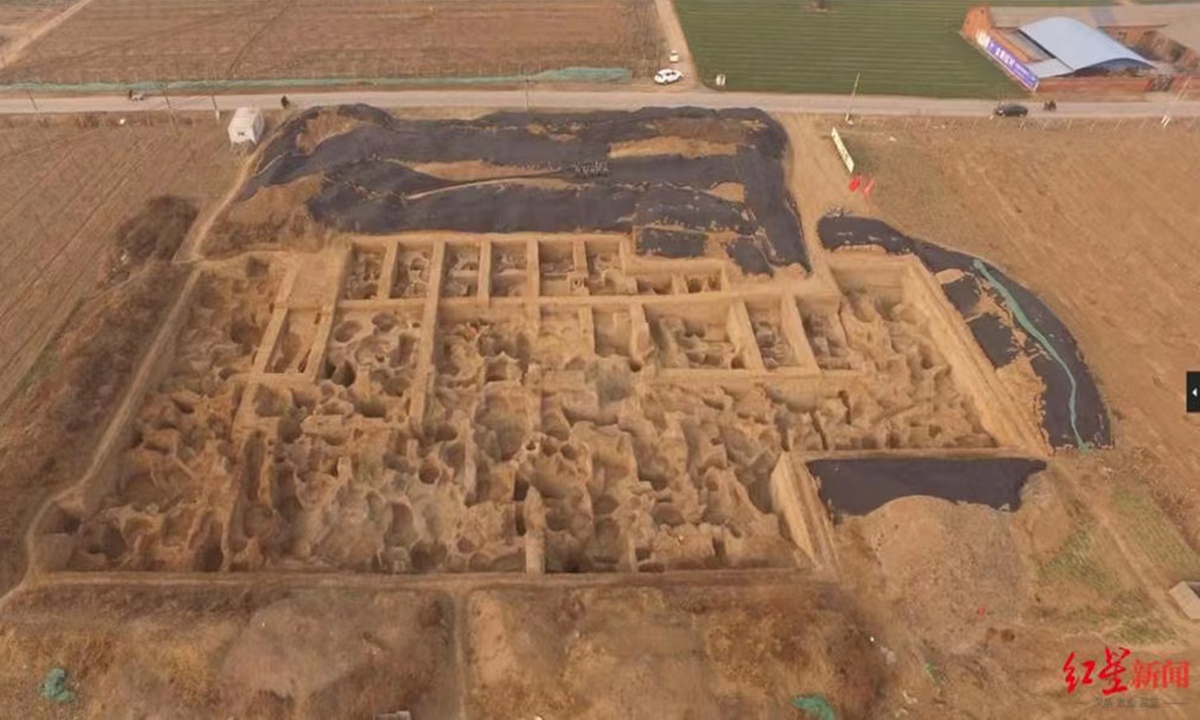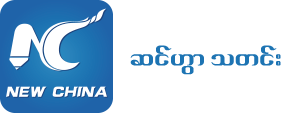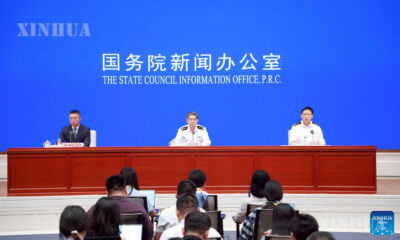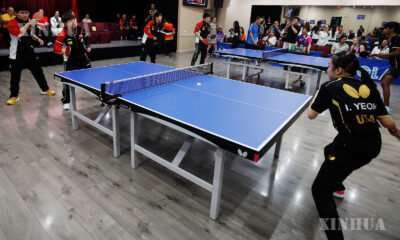China
တရုတ်နိုင်ငံအလယ်ပိုင်း ဟဲနန်ပြည်နယ်၌ ကမ္ဘာ့ရှေးအကျဆုံး ဒင်္ဂါးသွန်းအလုပ်ရုံနေရာ တူးဖော်တွေ့ရှိ

ကျိန့်ကျိုး၊ ဩဂုတ် ၁၀ ရက်(ဆင်ဟွာ)
တရုတ်နိုင်ငံအလယ်ပိုင်း ဟဲနန်ပြည်နယ်တွင် သက်တမ်းအားဖြင့် လွန်ခဲ့သော နှစ်ပေါင်း ၂,၅၀၀ခန့်က တည်ရှိခဲ့သည့် ကမ္ဘာ့ရှေးအကျဆုံး ဒင်္ဂါးသွန်းအလုပ်ရုံ နေရာကို တူးဖော်တွေ့ရှိခဲ့ကြောင်း သိရသည်။
ရေဒီယိုကာဘွန်နည်းပညာအသုံးပြု၍ တရုတ်နိုင်ငံ ရှေးဟောင်းသုတေသနပညာရှင်များက ဟဲနန်ပြည်နယ် မြို့တော် ကျိန့်ကျိုး(Zhengzhou) အနောက်ဘက်ပိုင်း Xingyang မြို့ရှိ Guanzhuang မြို့ပျက်တွင် ရှေးခေတ်ကြေးသွန်းအလုပ်ရုံတစ်ခုကို တူးဖော်တွေ့ရှိခဲ့ခြင်းဖြစ်ပြီး ယင်းမှာ ခရစ်တော်မပေါ်မီ ( ၆၄၀-၅၅၀ ဘီစီ) ခန့်က လုပ်ကိုင်ခဲ့သည့် အဆင့်မီ သတ္တုဒင်္ဂါးပြားသွန်းလုပ်ရန် စတင်ခဲ့သော နေရာဖြစ်ကြောင်း နှင့် ကမ္ဘာပေါ်တွင် ရှေးအကျဆုံး ဒင်္ဂါးသွန်းအလုပ်ရုံကြီးအဖြစ် လုပ်ကိုင်ခဲ့သော နေရာဖြစ်ကြောင်း သိရသည်။
တူးဖော်မှုများ ဆက်လက်လုပ်ဆောင်နေစဉ်အတွင်းမှာပင် ယင်းနေရာ၌ အပြင်သားပုံစံခွက် အပြင် အသုံးမပြုရသေးသော ၊ အသုံးပြုပြီးသော ဒင်္ဂါးသွန်းပုံစံခွက်များအပါအဝင် ဒင်္ဂါးသွန်းလုပ်ရာ၌ အသုံးပြုသည့် ဆက်စပ်ပစ္စည်း လေးမျိုးကို ရှာဖွေတွေ့ရှိခဲ့ကြောင်း ကျိန့်ကျိုးတက္ကသိုလ်မှ ရှေးဟောင်းသုတေသနဌာန ပါမောက္ခ Han Guohe က ဆိုသည်။
ထို့ပြင် ရှေးဟောင်းသုတေသနပညာရှင်များသည် ယင်းနေရာ၌ ကြေးထည်အပိုင်းအစများ စွန့်ပစ်သည့် ကျင်းဟောင်းများစွာကိုလည်း တူးဖော်တွေ့ရှိခဲ့ကြောင်း ၊ အဆိုပါကျင်းဟောင်းများအနက်တစ်ကျင်း တွင် သွန်းလုပ်ထားပြီးသော သတ္တုဒင်္ဂါးပြား နှစ်ပြားကိုလည်း တွေ့ရှိခဲ့ရကြောင်း သိရသည်။
အဆိုပါဒင်္ဂါးများသည် နွေဦး နှင့် ဆောင်းဦးကာလ (၇၇၀-၄၇၆ ဘီစီ) နှင့် ပြည်ထောင်အချင်းချင်း စစ်မက်ကာလ( ၄၇၅-၂၂၁ ဘီစီ) ခေတ်က ငွေကြေးအဖြစ် လည်ပတ်အသုံးပြုခဲ့သည့် တရုတ်နိုင်ငံ၏ အစောဆုံးသတ္တုဒင်္ဂါးပြားများဟု ယူဆရကြောင်း Guanzhuang မြို့ဟောင်းနေရာ တူးဖော်ရှာဖွေရေး ရှေးဟောင်းသုတေသန အဖွဲ့ခေါင်းဆောင် Gao Xiangping ၏ ပြောကြားချက်အရ သိရသည်။
အသစ်တွေ့ရှိသော အလုပ်ရုံနေရာသည် ရှေးဟောင်းသုတေသနနောက်ခံအကြောင်းအရာများ လေ့လာရန်အတွက် ရှင်းလင်းစွာ ထောက်ပံ့မှုပြုလုပ်ပေးနိုင်သည့် နေရာတစ်ခုဖြစ်ရုံမျှသာမက ငွေကြေးထုတ်လုပ်သုံးစွဲမှု အချိန်ကာလအပိုင်းအခြားကိုလည်း တိကျစွာ သိစေနိုင်မည်ဖြစ်ကြောင်း၊ ထို့ပြင် သတ္တုငွေကြေး အသုံးပြုမှု ဖွံ့ဖြိုးတိုးတက်လာစဉ်အချိန်ကာလက လူမှုရေး နှင့် စီးပွားရေး ယန္တရားလည်ပတ်ပုံကိုလည်း ရောင်ပြန် ထင်ဟတ်စေကြောင်းလည်း Han က ဖြည့်စွက်ပြောကြားခဲ့သည်။
၂၀၁၀ ပြည့်က ပထမဆုံးတူးဖော်မှု ပြုလုပ်ခဲ့သည့် Guanzhuang မြို့ဟောင်းနေရာသည် အနောက်ဘက် Zhou မင်းဆက် ခေတ်ကာလအတွင်း ဘီစီ ၈၀၀ ခန့်က အလုံးစုံတည်ဆောက်ပြီးစီးခဲ့သည့် မြို့တော်နေရာဖြစ်ပြီး ဘီစီ ၄၅၀ ခန့်က ဖျက်ဆီးခြင်းခံခဲ့ရသည်။ ယင်းနေရာတစ်ဝိုက်တွင် လက်မှုလုပ်ငန်း အလုပ်ရုံနေရာပေါင်းများစွာကို တူးဖော်တွေ့ရှိရပြီး ကြေးသွန်းထည်များ ၊ ရွှံ့ထည်လုပ်ငန်းများ နှင့် လူလုပ်အရိုးအသွားများအပါအဝင် လက်မှုလုပ်ငန်းအမျိုးမျိုးကို တွေ့ရှိခဲ့ရကြောင်း သိရသည်။
အဆိုပါ ဒင်္ဂါးသွန်းအလုပ်ရုံ နှင့်ပတ်သက်သော သတင်းအကြောင်းအရာကို ကမ္ဘာ့ရှေးဟောင်းသုတေသနအကြောင်းအရာများကို သုံးသပ်ရေးသားဖော်ပြနေသည့် Antiquity ဂျာနယ်တွင် ပုံနှိပ်ဖော်ပြခဲ့ကြောင်း သိရသည်။ (Xinhua)
————————————
(English Version)
World’s earliest coin workshop found in central China’s Henan
ZHENGZHOU, Aug. 9 (Xinhua) — The world’s oldest coin minting workshop dating back about 2,500 years ago has been uncovered in central China’s Henan Province.
Using radiocarbon dating, Chinese archaeologists have confirmed that a bronzeware casting workshop at the ruins of Guanzhuang in Xingyang City, the western part of the provincial capital Zhengzhou, Henan, had begun to mint standardized metal money around 640-550 BC, making it the earliest known coin making workshop in the world.
During further excavation, four types of relics related to coin manufacturing were unearthed at the site, including finished coins, used and unused coin molds as well as outer molds, said Han Guohe, an archaeology professor from Zhengzhou University.
Archaeologists have also uncovered several pits where large quantities of bronzeware casting waste were dumped, with two finished metal coins found in one of the pits.
The coins are believed to be the currency in circulation back in Spring and Autumn Period (770-476 BC) and the Warring States Period (475-221 BC), one of ancient China’s earliest metal coins, according to Gao Xiangping, the archaeological team leader of excavation at the Guanzhuang ruins.
New discoveries at the workshop site not only provide a clear archaeological background for studies on the exact time of currency production but also help reflect the social and economic mechanism during the development of metal money, Han added.
The Guanzhuang ruins, first excavated in 2010, is a complete city site built about 800 BC during the Western Zhou Dynasty and was abandoned about 450 BC. A large area of handicraft workshops was found at the site, where various handicraft activities including bronzeware casting, pottery making and bone artifact production had been carried out.
A paper on the coin workshop has been published by Antiquity, a peer-reviewed journal of world archaeology. Enditem
Photo- The mint used measuring tools to produce standardized currency.






